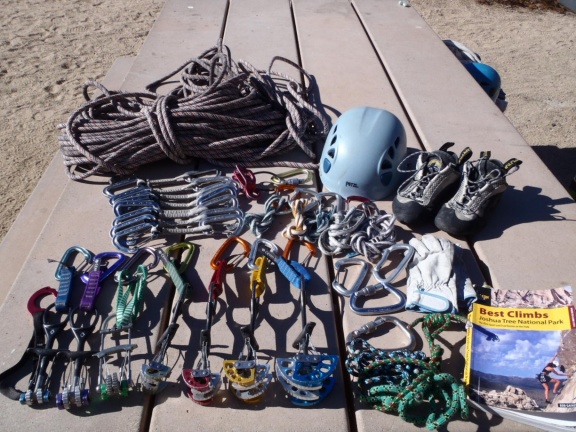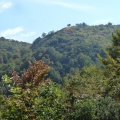Joshua Tree Climbing
Climbing in Joshua Tree National Park is different. Although I have been climbing in a similar area, Yosemite, some years before, when we visited Joshua Tree National Park during our New Year trip, I again was surprised about the different style. To sum it up in a few words: Bring a lot of gear, the more the better!
The reason is that Joshua Tree rock climbing is mostly trad climbing in combination with sometimes challenging crack and chimney climbs. And here trad climbing means not “now and then you might find a bolt or piton”, but more like “yeah, all clean in, all clean out”. As long as there is a crack or any chance to put protection – and sometimes even if it is not possible – routes are completely void of set protection. The following crack is graded 5.11c (as far as I remember), a boulder problem at the beginning followed by a less difficult upper part. In this case putting protection was relatively easy, otherwise we would not try such a difficult route.
But not only the routes themselves are without protection, in most cases also the belay point or top rope point at the top has to be made with cams and nuts. Only in very rare cases there are bolts or rings at the top. This was even for me something new, top-roping from a set of cams. In addition, the placements are often not in really optimal positions, so one has to extended the belay quite a lot to be able to top-rope without too much friction.
Putting it all together, one often ends up setting up a top-rope and not leading difficult, or hard to protect routes. This one for example is ok to climb, but the placements are rare, and one wants to put the finger into the places where the cams would go. So better to top-rope.
The only place where bolts are to be seen, although not in huge groups, are slabs. There are some quite impressive slabs out there. Not surprising for a granite climbing area. But climbing a 40m-route with 3 or 4 bolts was something that reminded me of good old times in Chamonix. This route’s grade was not too hard, 5.8, but with all the air below and the option to make loooong jumps, it is still challenging.
A final word to the grades: This simple warm-up route, the first we did, was graded what, 5.6 or 5.7, so really easy. But huuuu, the last crack up there wasn’t easy at all. And this is the general setting, grading in Joshua Tree is very tough. Add at least .2 to get to more standard gradings. So when at home in Kanazawa I normally climb in the 5.11 and up, a 5.9 can be quite challenging, and 5.10 and above in Joshua Tree is a psycho-trip when led.
But all these circumstances have also one great effect. After you have made it up there, after you have did it all yourself, the happiness and satisfaction that fills you is obvious, here Masumi after one of her lead climbs! Congratulations!
What I liked a lot was that even though it is mostly trad climbing, still a lot of beginners (like us) and even first-timers come to Joshua Tree for climbing. Impressive looking at the super-security policy that is common in Japan. I’ll be back there!








